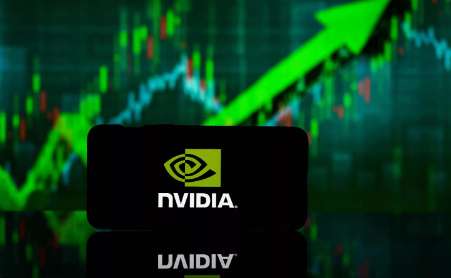Power Integrations' Resilient Performance Amid Market Volatility: A Case for Operational Excellence and Undervaluation
The semiconductor industry has faced headwinds in 2025, yet power integrations (NASDAQ: POWI) delivered a Q1 performance that underscores its resilience. Despite revenue stagnation sequentially, the company’s non-GAAP EPS of $0.31—beating estimates by 8.9%—signals a disciplined focus on operational efficiency. This article argues that POWI’s margin expansion trajectory, undemanding valuation, and strategic investments position it as a compelling long-term play, even as macroeconomic clouds linger.
The EPS Beat: A Triumph of Cost Discipline
While Q1 revenue of $105.5 million was flat compared to Q4 2024, the 15% YoY growth reflects sustained demand for the company’s high-voltage semiconductor solutions. The standout was its non-GAAP operating margin, which surged to 14.7%—up from 12.7% in Q4 and 8% in Q1 2023. This margin expansion, driven by cost controls and higher gross margins (55.9% non-GAAP), reveals a company executing with precision.

Even as revenue growth slowed, the company reduced stock-based compensation expenses relative to sales and optimized its supply chain. This contrasts sharply with peers struggling to maintain margins amid inflation and inventory overhangs. The 72% YoY jump in non-GAAP EPS to $0.31, despite flat sequential revenue, is a testament to management’s ability to squeeze value from existing operations—a critical advantage in volatile markets.
Valuation: A Bargain Amid Growth Catalysts
At current levels, POWI trades at a forward P/E of ~18, significantly below its five-year average of 25 and well below the broader semiconductor sector’s average of 22-24. This discount overlooks its strong cash flow and balance sheet: Q1 free cash flow margins hit 19.6%, up from 12.6% in Q1 2023, and the company maintains no debt.
Analysts project a $71.60 average price target—implying 38% upside from current prices—factoring in margin expansion and secular tailwinds like AI adoption and grid modernization. Meanwhile, the $0.21 quarterly dividend (yielding 0.8%) and aggressive buybacks ($23.1M in Q1 + $25M in April) reinforce shareholder value. With a new $50M repurchase authorization, the company is poised to capitalize on its undervalued status.
Inventory Build-Up: A Concern, But Not a Crisis
Critics point to a 11% sequential rise in Days Inventory Outstanding (DIO) to 325 days, exceeding its five-year average. However, CEO Balu Balakrishnan emphasized “steady order trends” and “normal channel inventories,” suggesting this reflects strategic stockpiling ahead of H2 demand. The company’s focus on high-voltage markets—critical for energy efficiency, AI, and EV charging—aligns with secular trends that will amplify in the second half.
Why the Long Position Now?
- Margin Expansion Pipeline: The projected H2 gross margin of ~55% (non-GAAP) could rise further as cost efficiencies materialize.
- Undervalued Multiple: A forward P/E of 18 vs. a 5-year average of 25 leaves room for re-rating.
- Dividend + Buybacks: Shareholder returns are prioritized, reducing downside risk.
- Market Leadership: POWI’s innovations in Gallium Nitride (GaN) and Silicon Carbide (SiC) position it to capture $12B+ in addressable markets by 2030.
Risks and Mitigants
- Trade Policy Uncertainty: Geopolitical risks could delay H2 demand, but POWI’s diversified manufacturing (Asia-Pacific and U.S.) buffers against disruptions.
- Inventory Overhang: If DIO remains elevated, investors may demand deeper discounts. However, the CEO’s confidence in “normal” channel inventories suggests this is a temporary issue.
Conclusion: A Rare Opportunity in Semiconductors
Power Integrations’ Q1 results highlight a company mastering operational leverage even as peers falter. With a favorable risk/reward ratio (38% upside potential vs. manageable risks) and a catalyst-rich H2—driven by margin expansion and AI-driven demand—the stock is primed for a re-rating. For investors seeking quality in a choppy market, POWI offers a rare blend of resilience, valuation upside, and secular growth. The time to act is now.
John Gapper
Ask Aime: How does Power Integrations (POWI) maintain EPS growth despite market volatility?










